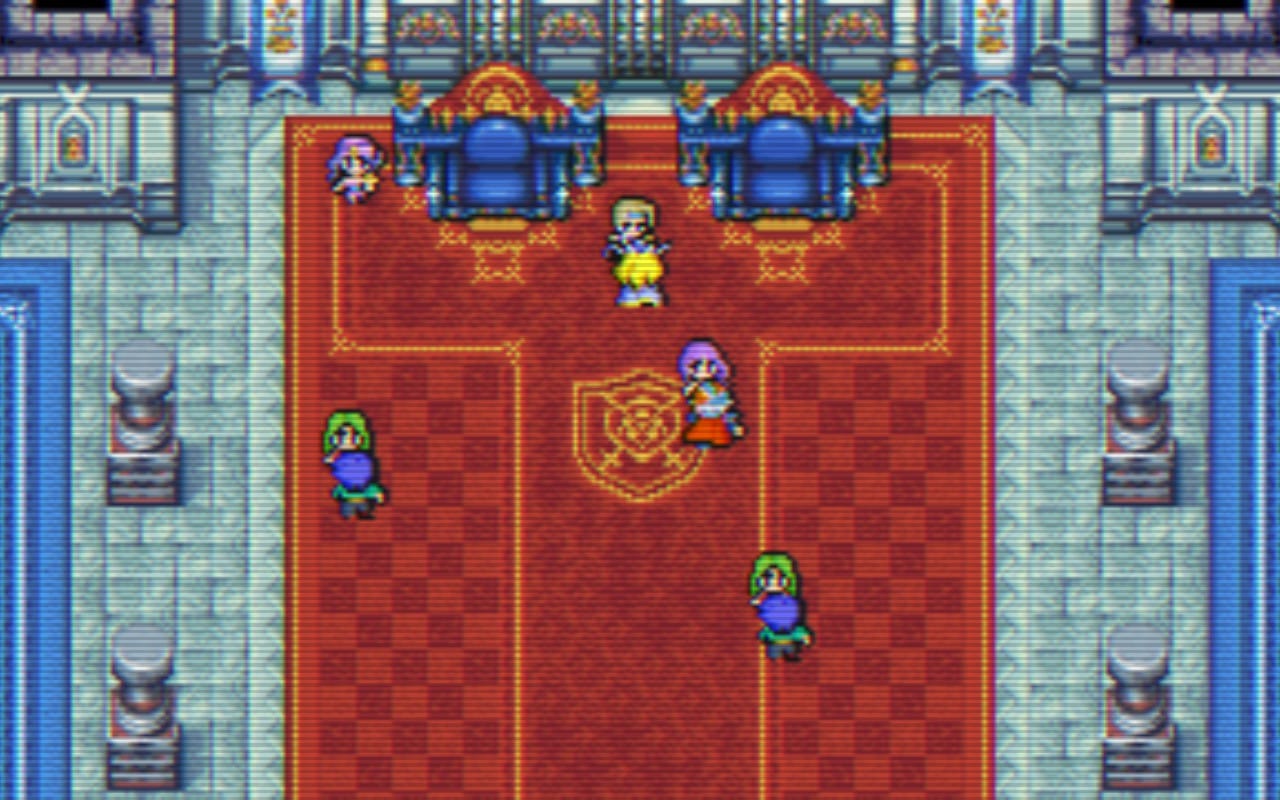The Tragic FINAL FANTASY II
Complicated feelings for a classic game
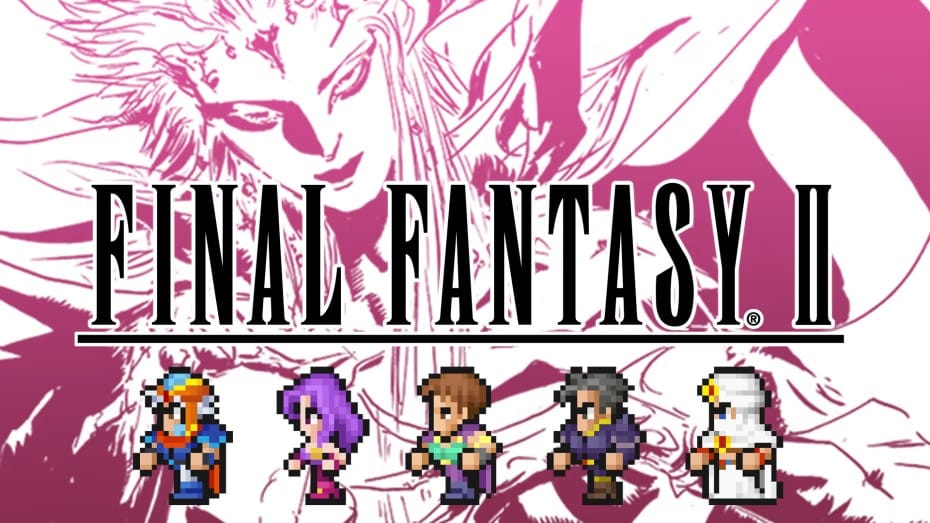
Final Fantasy II has a storied and complex public reputation in the 2020s. If you look at your average Final Fantasy tier list, it will be quickly dismissed as the worst that Final Fantasy has had to offer in its nearly 37-year history. A deeper dive reveals that the apologists for this game applaud it for being playable in the modern age while still actively avoiding calling it a good experience.

I went into Final Fantasy II with high expectations, looking to prove the naysayers wrong. Foolish of me, but in this, I found a lot to like about this game. I’m not writing here to say it is a misunderstood masterpiece or a hidden gem in the famous franchise. Final Fantasy II is a bold experiment that dared to ask if the job system could be retrofitted into something more resembling the Elder Scrolls, and it failed. The Pixel Remaster offers this game in its most playable state; that’s the version I experienced. In this essay, I shall detail my journey rebelling against the imperial war machine.
The Kids Are Alright
Final Fantasy II opens with your party of four facing their certain doom as black knights close in on them. You are offered a moment to react, but are swiftly cut down by the knights. Our protagonists were fleeing from an imperial military occupation of Fynn, where their parents were killed. The main protagonists' names are Firion, Maria, Guy, and Leon, although you are prompted to change their names if you wish.
You are awoken by my main man, Minwu, who will note that these kids are a lot stronger than they look; they’ll survive. After some explanation, Firion and the gang discover that the princess has rallied the remainder of her people in the nearby town and is finding ways to stop the Emperor from taking over the entire world. They are on the back foot, having lost their home, but they’ve heard of a weapon being developed in a faraway town that would be devastating if it were let loose. This weapon is the Dreadnought, and you are tasked with stopping its construction.
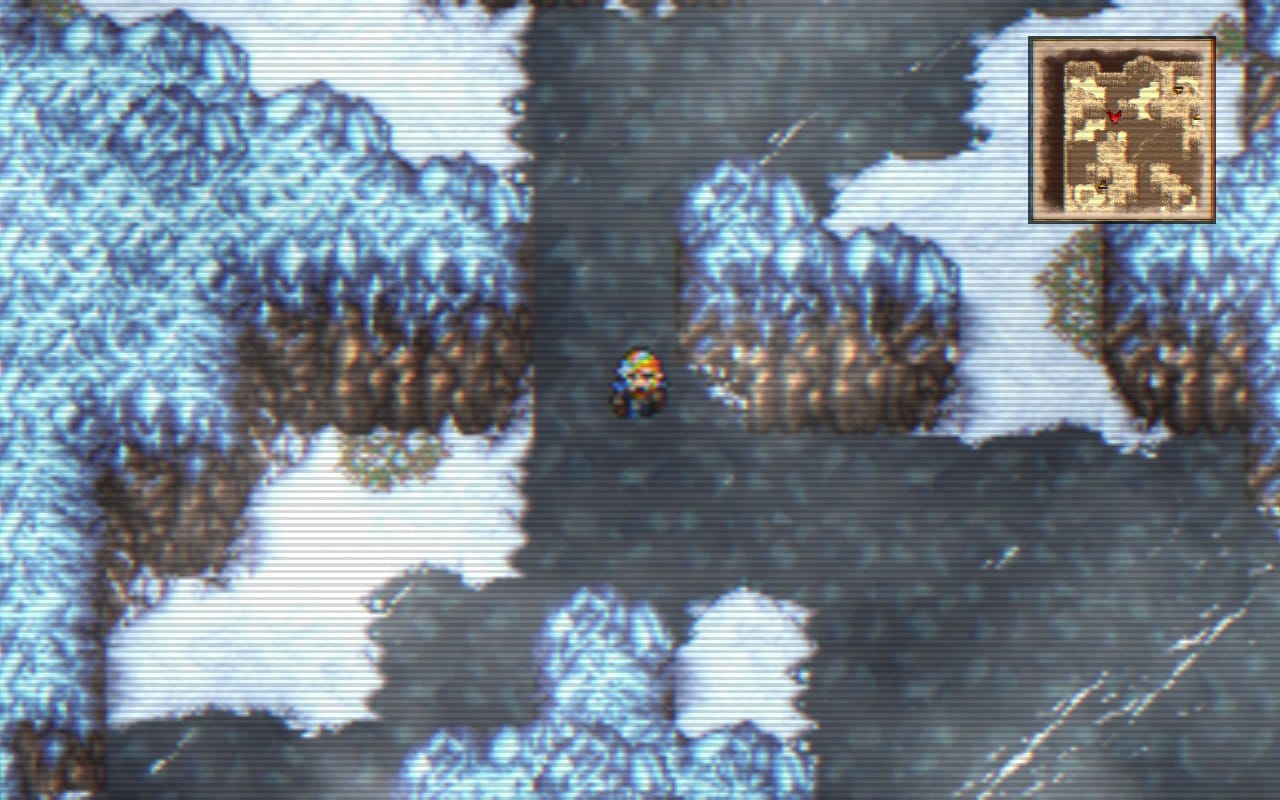
A moment of heroics and our very first obligatory Cid moment later, and we have found the Dreadnought. At this point in the game, I was having a blast. Coming in hot from the first Final Fantasy, I was thrilled to see some real characters and story beats that got me genuinely excited to move forward.
Since this is the first big section of the game, I’d like to pause to address the elephant in the room, the divisive progression system. In Final Fantasy II, our heroes do not have a level; they have skills that level up based on how often they are used. If you equip a sword on Maria and swing that sword around, Maria will gain levels in swordplay, eventually becoming proficient in it. Unfortunately, this also applies to taking damage. Only by receiving damage will the maximum HP of a party member go up. This has brought about a popular rumor in online guides and forums that you will be too weak to continue the game unless you grind HP levels by having the party members attack each other in combat.
In the Pixel Remaster of Final Fantasy II, I am pleased to announce that I did not have to attack my teammates even once to stay ahead of the game. The leveling system in this game works as intended in its most modern iteration, and it feels excellent to have every combat rewarded with experience in a skill.

The Trouble With Combat
After finding the Dreadnought, the Dark Knight reveals himself and tells the party that the Dreadnought, which he has been building in secret, is finally ready. In a surprising scene, the Dreadnought takes flight and carpet bombs every major town that you’ve visited so far. As you’ve been to a good handful of towns and spoken to a lot of people at this point, it is quite shocking to see their homes destroyed like this. As such, your motivation to take the fight to the Empire receives quite the boost, and is a great first disaster to introduce the Dark Knight and the Empire as our main villain.
After recouping, the party sets off on their mission to destroy the Dreadnought before it can cause more harm. Cid lets you know how to blow up the destructive airship, and you take off to ground the Dark Knight for good. Notably in this section, Guy becomes an absolute legend by admitting, “Guy speak beaver.” This lets you take an ancient artifact from a village of beavers and cements Guy’s place in the Final Fantasy hall of fame. Firion remains the face of this game despite Guy's efforts, and also gets his big character moment when he accidentally almost has sex with a giant snake. Fans of Final Fantasy XIV Stormblood will know that you really can’t blame him; it happens.
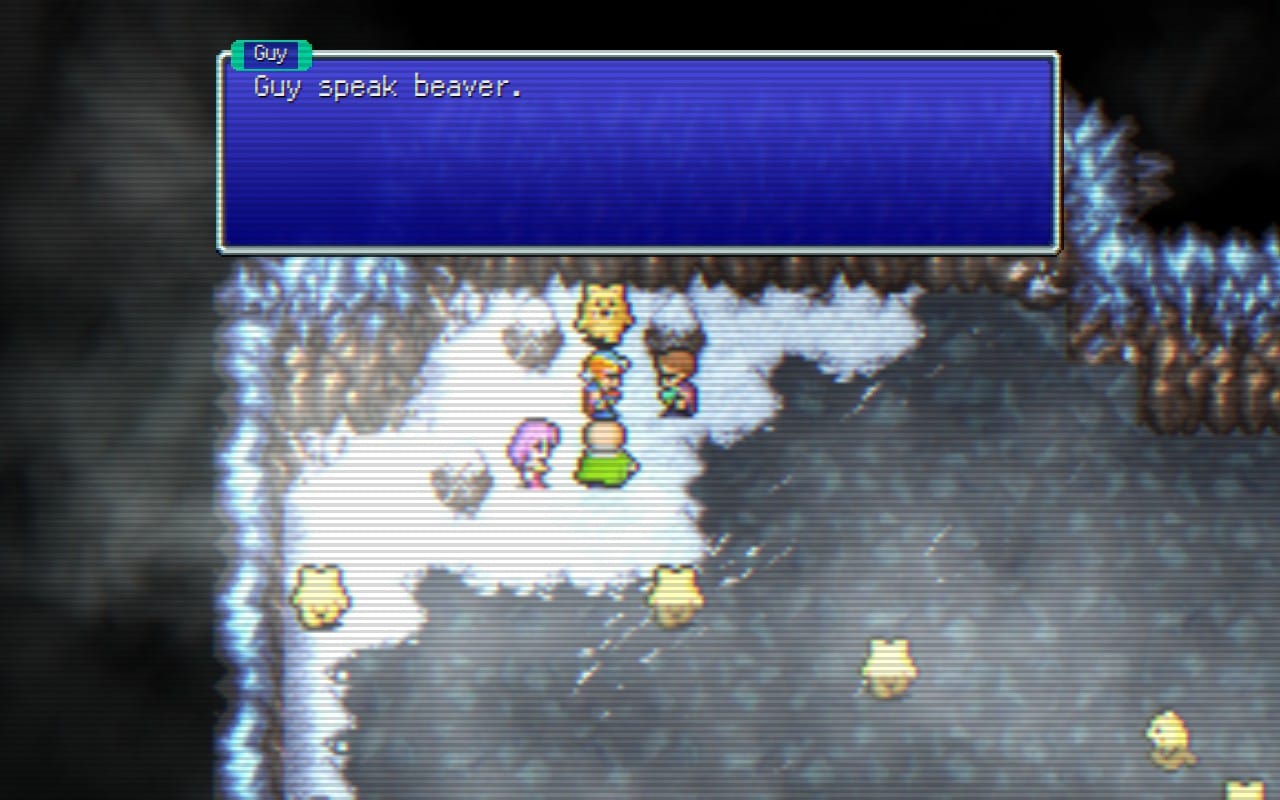
The Dreadnought is a major stopping point for a majority of players. This dungeon marks a significant difficulty spike and demands that you start paying attention to combat now if you haven’t already. The Emperor commands armies of actual Hell, and they start to take a major role from here until the end of the game. These enemies cause debilitating status effects on your party, like Stun, Blind, and Poison, that can slow your advances in this dungeon and even cause you to turn back.
I really resented this turn in combat when I went through it. My main issue with this difficulty spike is that the status effects don’t ask you to employ any strategy except possibly casting Blink so that you can dodge all attacks, or just running away from troublesome fights altogether, which is actually the best strategy in this dungeon. You can actually flee through most of this dungeon if you’d rather level up somewhere else, since there is no boss fight at the end of the Dreadnought.
Right before you blow up the Dreadnought, it’s revealed that the Dark Knight is actually Maria’s brother Leon. It’s a known fact that the event writers for Final Fantasy were big Star Wars fans, but having to save the rebel princess from an imperial war machine, then the imperial second in command clad in all black armor, revealing that he is actually a relative of the main protagonist, is not helping them beat the allegations. Regardless of all this, the moment that Maria discovers that Leon is the Dark Knight really got me; she just says “Wait, that voice…” and you know. What can I say, I’m a big Star Wars nerd as well.
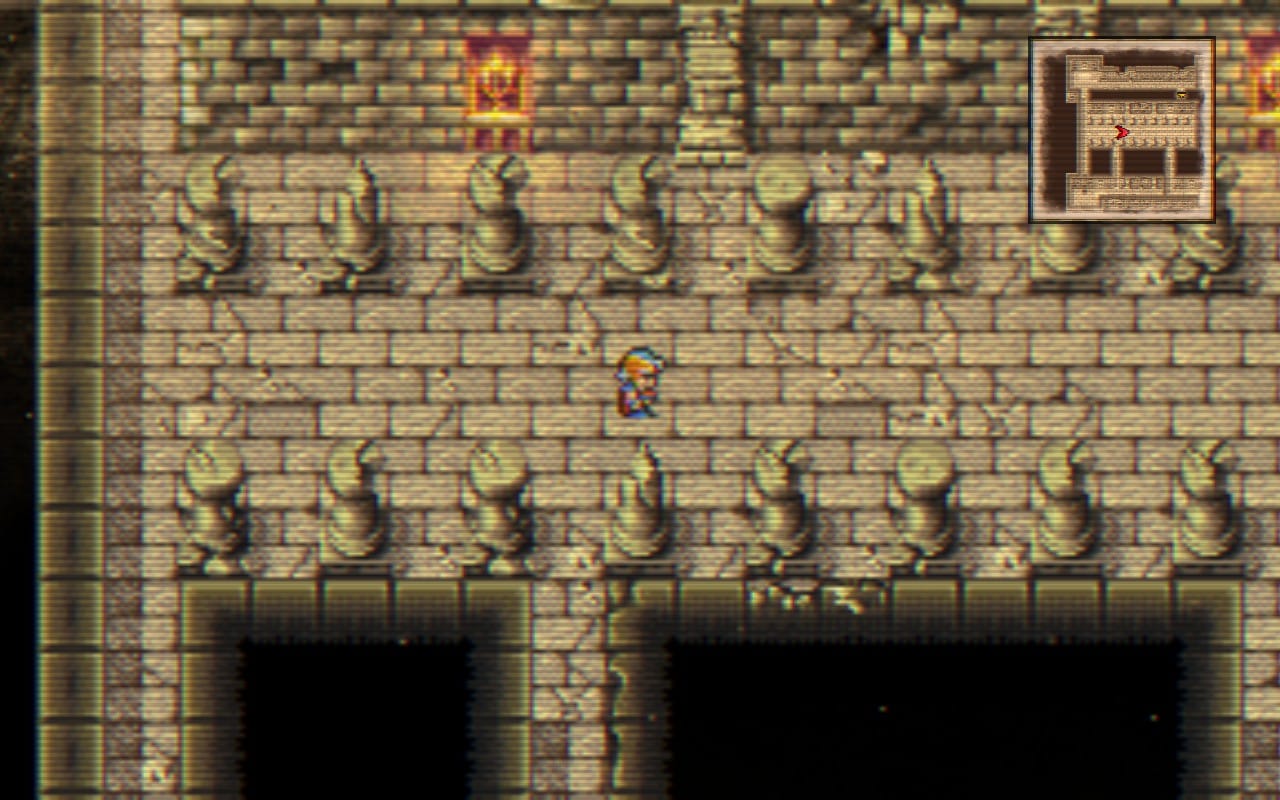
The rest of the story focuses on gaining the aid of the Dragoons and learning the ultimate magic. This is the first time in the series that we meet the famous dragon-riding lancers, and they are all dead or missing. This game continues to punch hard as story events are killing off a lot of our companions, and we even watch the last dragon die while managing to save the last dragon egg.
The Coliseum is a short chapter in the game that features our first fight against a Behemoth. I remember the first time I had fought one of these when I was a little kid playing Kingdom Hearts on my PlayStation 2. This had some great nostalgia for me.
We take back Castle Fynn from one of the imperial agents without much of a fight and are finally sent to retrieve the ultimate magic from Mysidia. This is the most challenging area of the game. Most of the normal enemies are capable of either doing massive damage or casting annoying status effects on you. By this point in the game, I would just run from anything that I knew would give me trouble. You should have plenty of money to max out your stock of basically every medicine in the game, so while it doesn’t usually threaten to end your game, you’ll be annoyed at the speed bumps.
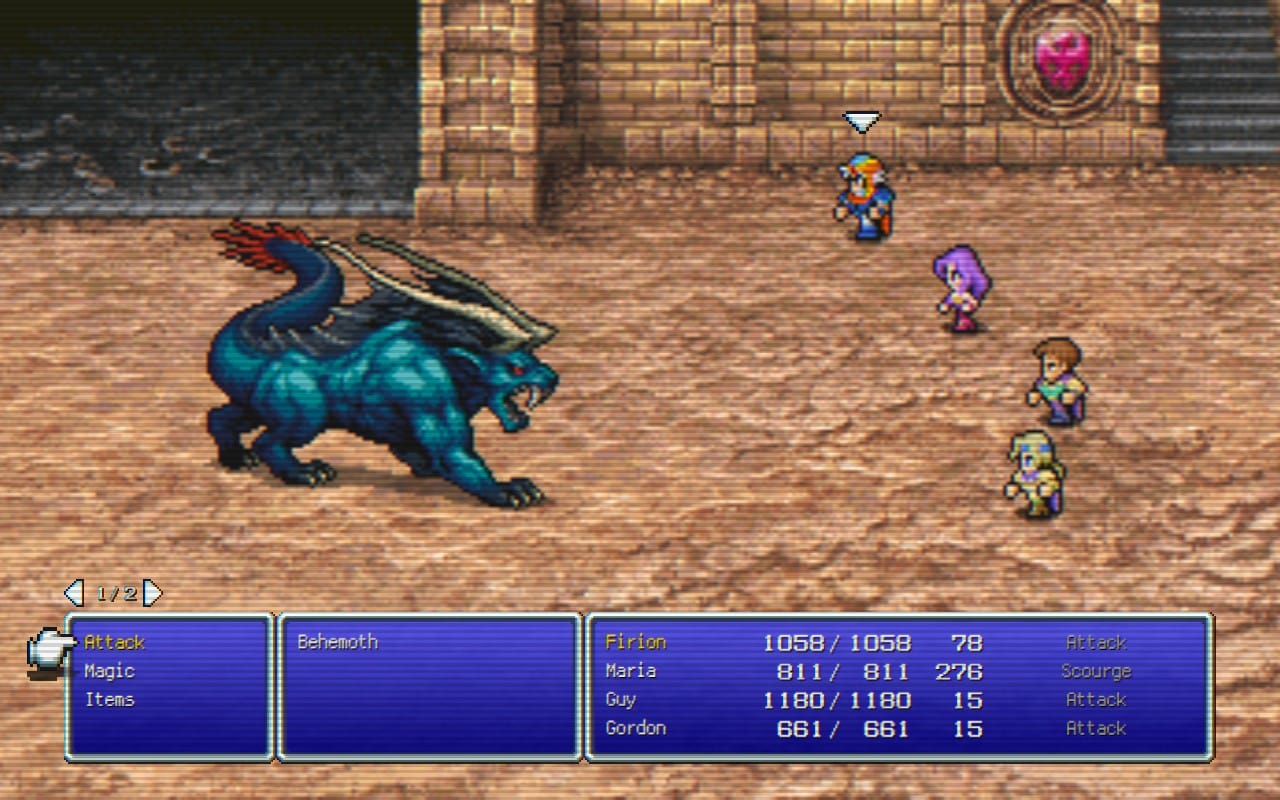
So the second elephant in the room has been sitting here for a majority of the essay, but let’s get it out of the way now. The encounter rate in this game is insanely high. You typically make it approximately halfway down any single hallway in a dungeon (maybe ten tiles) before being thrown into a battle. After Final Fantasy I, this didn’t bother me much. I grew to enjoy the combat even when it was starting to get a little repetitive. But being blinded, stunned, stoned, poisoned, charmed, and instantly killed in random battles made me realize that I wanted significantly less combat thrust upon me. In my opinion, the game would benefit a lot from reducing the encounter rate and raising the experience gain to balance.
The first two Final Fantasy games are dug in with the older magic system, where most of the spells just have a random chance to apply a debuff to any combatant. I don’t think we could ever change these specific games, but lowering the encounter rate would really help make the adventure much more enjoyable. Even adding a repel system. similar to how Pokémon does it, thus reducing encounter rates at certain parts, would be nice. Not to spoil anything from my next essay, but as of writing this, I’m already a handful of hours into Final Fantasy III and only encountering two to three enemies per floor of any dungeon feels so much nicer, and I’m having an exponentially better time in that game already as a result.
You are afraid of walking in Final Fantasy II. I was AFRAID OF WALKING. I would set down my entire Steam Deck just so that I wouldn’t accidentally move in the wrong direction and risk adding more enemies to my trek. I've said before that using a guide in Final Fantasy was part of the experience of that game. I think that you could easily talk to NPCs and find out where to go next in Final Fantasy II, but you will want a guide because traveling to any city risks a large amount of time accidentally spent grinding or fleeing random mobs on the way there. The encounter rate hurts the exploration in this game, and that’s possibly the game's most tragic flaw.
The Beginning of the End
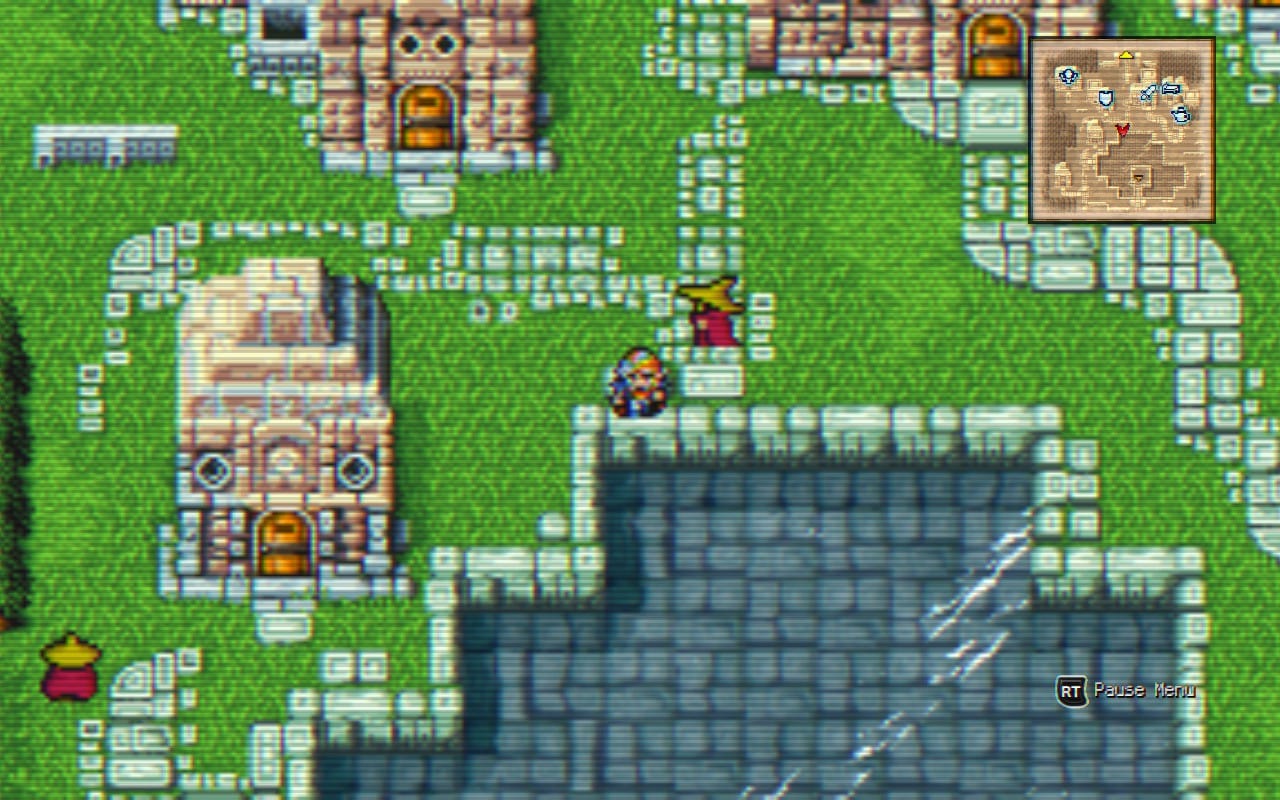
A really fun section of the story takes place just outside the Tower of Mysidia. In their first appearance in a game, Leviathan appears and swallows your whole ship. You meet up with Ricard, who immortalizes Dragoons as the coolest dudes who ever lived, and then fight your way out of the sea dragon by fighting its worms and stuff. It’s a little messed up that we leave a ton of other people in Leviathan, but we have places to be, and at least the Emperor will probably never carpet bomb the inside of the Leviathan.
At the top of the Tower of Mysidia, we finally catch up to Minwu, who tragically sacrifices himself to break the seal on the Ultima Tome so that we can learn the ultimate magic. Minwu was a great first party member; I dream of a version of this game where he lived to be in the whole game at Firion's side. I’ll miss you, buddy. This is made a little underwhelming because Ultima is a relatively weak spell. Many players will stop to grind Ultima at this point before approaching the finale, but I just used it as I went along, and it was fine. You will want Ultima on your mage for the final boss because he is resistant to all other magic damage, so make sure to at least equip it.
It’s here at the final stretch where the grind FOMO was starting to creep into the back of my mind. Especially with spells, you are going to see that maybe four to six spells were regularly used, and you have more than twelve spells that you never touched that might be useful.
“Should I stop and grind? Just a little to get these spells all leveled up to about seven?”
The answer is no, don’t waste your time on that. You don’t need to grind out Blink or Stun. All debuffs and buffs in Final Fantasy II stack their effectiveness on each cast. This means that even at level one, if you cast Blink on your party enough times, they will eventually gain enough buffs to become untargetable. But I’m getting ahead of myself.
One of the biggest criticisms of the Final Fantasy II leveling system is that it requires a lot of grinding. This is a false claim, as long as you have the willpower to ignore certain skills. It’s hard, you will want to grind until those cows come home to create three jacks of all trades that can all be healers, damage dealers, and tanks. This is where the system fails and where the job system won out.
The famous quotes from Soren Johnson and Sid Meier, in turn, are “Given the opportunity, players will optimize the fun out of a game,” and that, therefore, “One of the responsibilities of the designers is to protect the player from themselves.” Final Fantasy II, in its second half, does not regulate players' skill assignments and instead prompts them to complete the game. In this way, its most innovative feature was inextricably linked with the point of deepest frustration for its players.
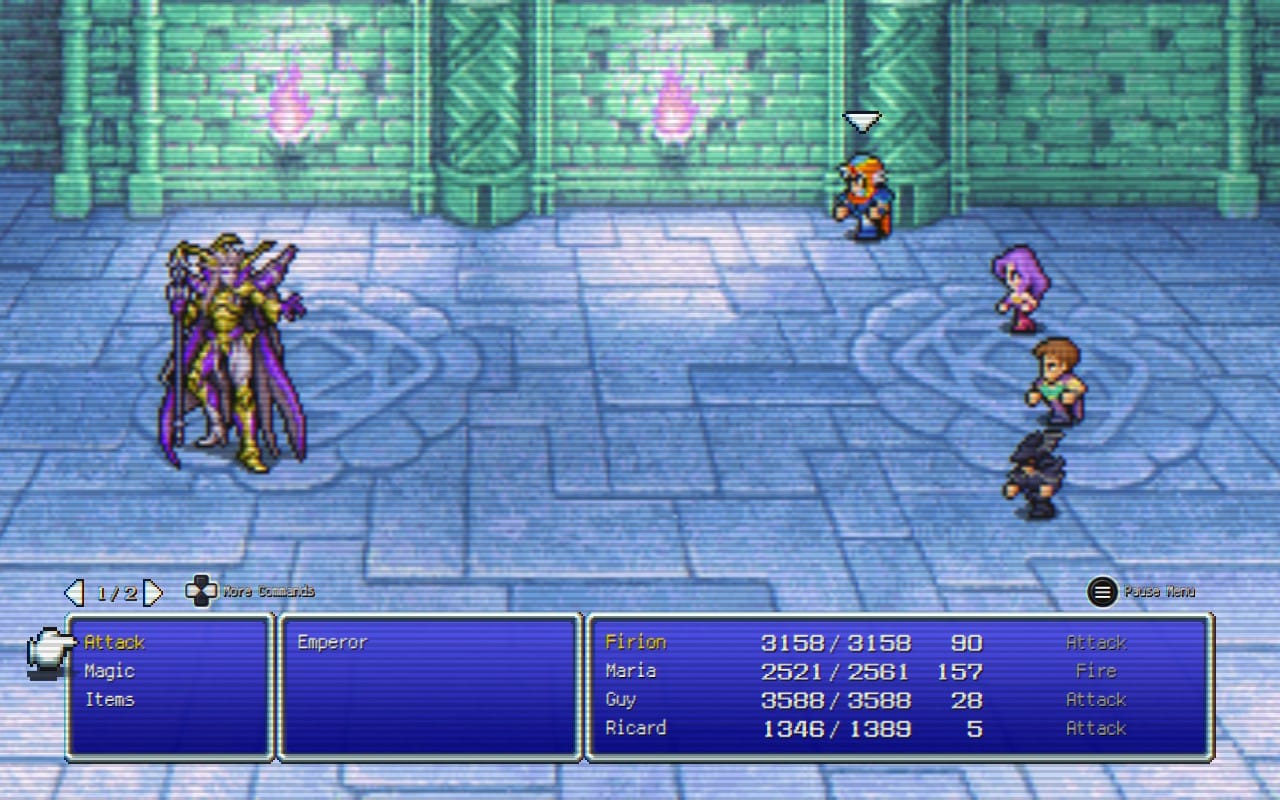
At the start of the game's finale, the Emperor summons the Cyclone and decimates every major city… again. The game continues to get morbidly grim as the Emperor destroys the world he seeks to rule. One of the NPCs will actually say “everyone’s dead” once the Cyclone's wrath is revealed. The world of Final Fantasy II is not filled with many people. After the Cyclone, I was left to ponder, “Who is even left to save?”
The Emperor perishes under your blade, as he was only a man. We get this scene where everybody left alive is dancing in Fynn, which is surprisingly advanced compared to the other cutscenes in this game. The celebration is cut short, though, and the final twist is revealed as the Dark Knight ascends the throne to continue the Emperor’s reign of terror. Maria knows that she and Firion are the only ones who can talk sense into Leon, so they go to finish things once and for all.
Flying into Castle Palamecia is a very cool feeling; you’ve spent the whole game exploring this land, and you finally get to climb its highest peak for your showdown with the Dark Knight. When you reach him, he refuses to see reason. Leon is too set in his ways to change. But then the REAL twist of Final Fantasy II happens. The Emperor rises in his new form. When he died and went to Hell, he was able to conquer it and become the Lord of Hell so that he could resurrect himself and have his revenge (you can’t make this stuff up, guys). With this new development, Leon haphazardly joins your team, and you set off again to finally (for real this time) finish the quest.
Jade Passage and Castle Pandemonium make up the longest dungeon in the game. I was maxed out on all of the potions and medicine I thought I could ever need, and I still found myself running dangerously low as I reached the Castle's peak. This dungeon is where even the most stubborn players must run away from battles, as many of the enemies are capable of inflicting instant death moves on the party as a regular attack. Running away from half of the battles made the length of the dungeon much more bearable as a result, though. The dungeon design is also much better than anything that we’ve seen in the series so far. Castle Pandemonium stands as the greatest design achievement throughout the first two games in the series.
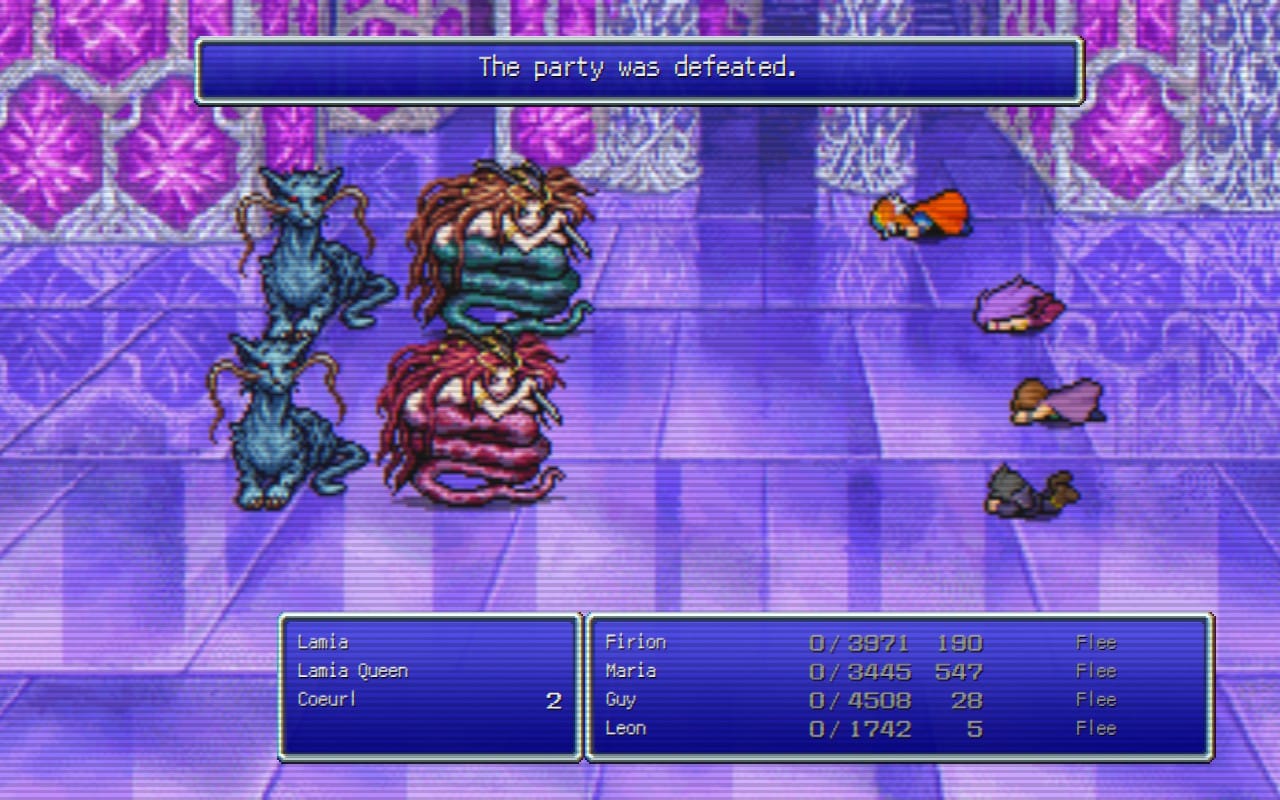
I also felt extremely lucky to be playing the Pixel Remaster, which features auto-save at the beginning of every floor. I got ambushed by a squad that was able to cast stun into instant death on every member of my party, causing a TPK (Total Party Kill) before I was able to input even one action. If I were playing any other version of the game, that death would have set me back 2 hours.
The party finally faces the Emperor, Lord of Hell, as the final boss of the game. It is recommended to get the Blood Sword earlier in the game so that you can blast through the Emperor with ease. I didn't know about that weapon, and it was now much too late for me to get it. That’s some bad luck; maybe I should’ve played with a guide.
The Emperor has two moves: he either casts multi-target magic that hits the entire party or swings for single-target damage that heals him for about a thousand health. I couldn't do more than a thousand damage to outweigh his advantage, so I was starting to freak out a bit. But then I remembered a few spells that I had seldom used on the path to the final battle.
Osmosis is a spell that saps MP from a single target. If you use it enough, your opponent just won't be able to cast any magic at all. Blink is a spell that applies buff stacks that increase any combatant's chance to dodge a single target attack. So while surviving the hellish onslaught, I took the Emperor’s magic, became so fast that he had no chance of ever hitting me, and used auto battle to have Maria spam Ultima until the Emperor was sent straight back to hell.
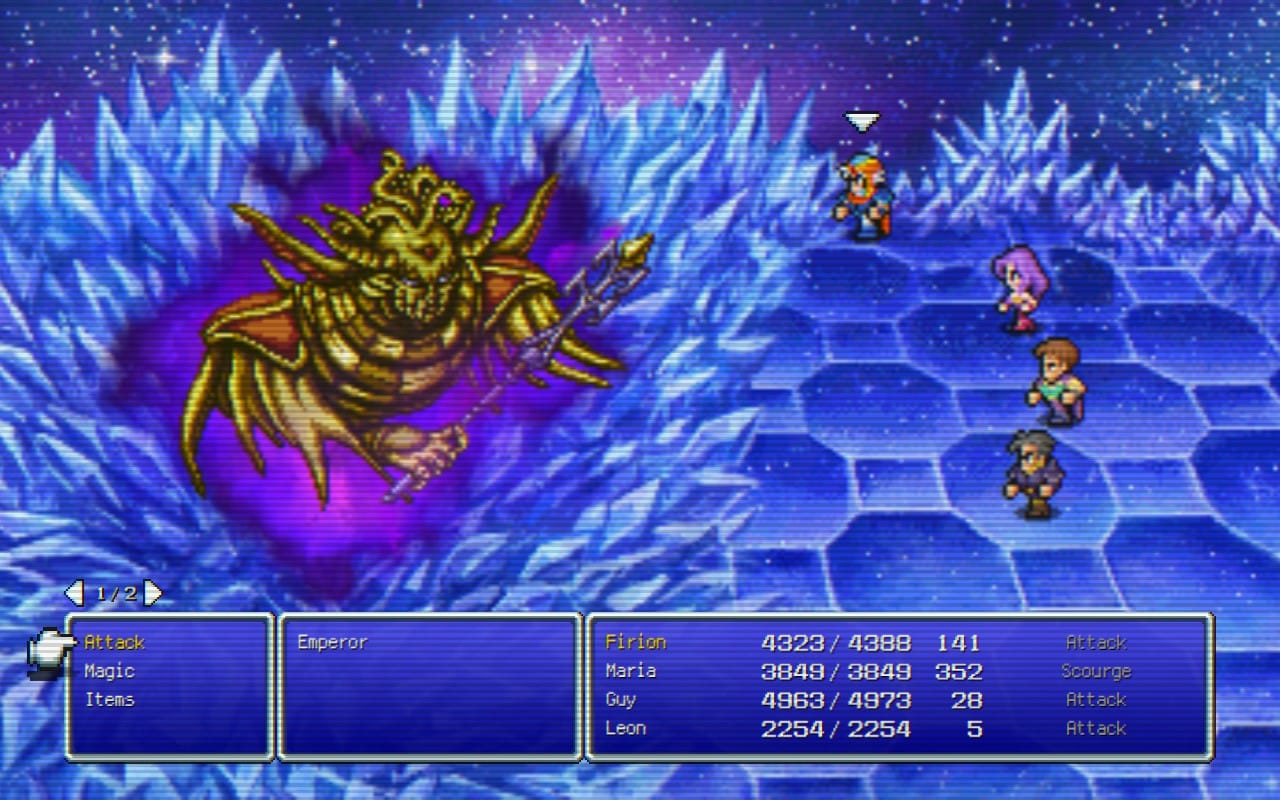
Honestly, I thought that auto-battling the final boss would cheapen the entire experience. Breaking the system the way that the game had been breaking me with instant death spells and stuns felt so rewarding, though. I had never been so motivated to shove some destructive magic into an evil magician's physical body until the end of this game. And I did it; I won.
Final Fantasy II is not a bad game, but it’s a bad match for its demographic. This brilliant and tragic story foreshadows how the series would lunge away from challenging gameplay and into a narrative focus. Every story moment when characters were dying and the Empire was growing made me want to push forward and see this adventure to its conclusion. But all of its systems were pushing me away, forcing me to not engage the way that my dungeon-crawling brain wanted to. Actually fighting a battle meant spinning a murder slot machine, and grinding skills only meant spinning that slot machine much more than I ever wanted to.
I don’t think I’ll ever play this game again; it’s a trudge through experimental systems where the reward is all the story that could fit on a Famicom cartridge. I really enjoy that small story, though, as it fits neatly in the annals of Final Fantasy lore, and I’m glad I got to experience it when I did. The world will never stop needing stories of the oppressed raging against the machine. Firion was the first in a long line of Final Fantasy underdog rebels, and I hope those themes continue to resonate throughout future Final Fantasy titles as the series continues to innovate.
